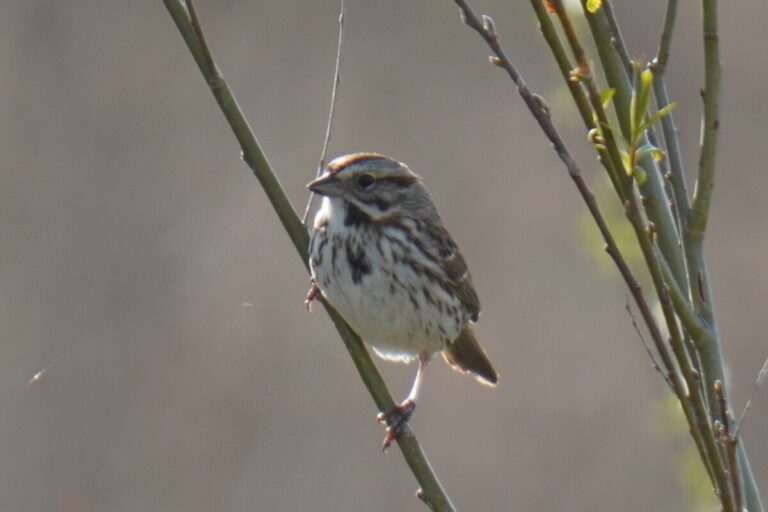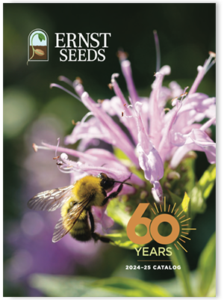Native songbirds sing the loudest In March to late May during their breeding season. However, in recent decades, the song has become much quieter.
These sweet-sounding birds come in many colors and occupy many different habitats. Still, they share one thing in common: they face declining populations just like most bird species in North America today.
Helping songbirds recover from these challenges will not be easy, but the right combination of awareness and widespread action can make it possible.
Today, we’ll discuss native songbirds and what gardeners, farmers, and conservationists can start doing today to support native songbirds.
Songbirds are Essential Members of North America’s Ecosystem
Songbirds are a diverse group, yet they share certain characteristics that you can easily recognize. Thin legs usually support their small, colorful, and charmingly round bodies, and their sharp beaks facilitate their preferred diet of insects and seeds.
But of course, there’s a good chance you’ll hear these little birds before you see them.
Songbirds have a large and complex vocal range that they use for more than just attracting mates. They use songs for everything from territorial defense to navigation. You’ll hear them at their most vocal during the breeding season, which is usually in the spring to early summer.
In fact, Ernst knows it’s time to harvest crops like Ohio Spiderwort (Tradescantia ohiensis), Whorled Rosinweed (Silphium trifoliatum), and Giant Sunflower (Helianthus gigantea) by observing the presence of songbirds in the fields.
Since North America hosts a significant portion of the world’s songbird species, by supporting native songbirds, you’re also aiding a wide range of ecosystems.
The Importance of Songbirds to Native Ecologies
Healthy songbird populations do more than just give you a reason to hike with your headphones off.
For example, songbirds directly affect plant diversity through seed dispersal and pollination. As they feed on seeds, fruits, and nectar, they transport pollen and seeds across vast distances.
Songbirds also sit near the center of the food chain. While they feed on large quantities of insects, they also serve as prey for larger predatory birds and mammals alike.
Most importantly for gardeners and farmers, songbirds play a crucial role in controlling harmful insect populations, which can reduce the need for chemical pesticides.
As bird populations across the U.S. face major population declines, supporting native songbirds is becoming increasingly important.
Challenges Facing Native Songbird Populations
A recent study from the Cornell Lab of Ornithology revealed a shocking loss of nearly 3 billion birds since 1970. This loss has affected “virtually all groups of birds in the U.S. and Canada,” including common songbirds like white-throated sparrows and dark-eyed juncos.
The challenges songbirds face are mostly the same that plague many other types of birds, namely:
Habitat Loss: Conversion of natural habitats for agricultural, urban, and industrial development is a primary driver of decline.
Pesticide Use: The widespread application of pesticides not only reduces the availability of insect prey but also poses direct poisoning risks.
Climate Change: Alterations in climate patterns affect the availability of food and suitable nesting sites, alongside shifting the timing of breeding seasons.
Predation and Human Interference: Predation by domestic cats and collisions with human-made structures are significant mortality factors.
By understanding the extent of the problem and the major drivers of the loss of North American songbirds, conservationists can begin the necessary task of supporting their resurgence.
4 Methods for Supporting Native Songbirds
Supporting native songbirds can be boiled down to four main categories of action: cultivating native vegetation, bird-friendly farming, habitat conservation, and participation in widescale conservation efforts.
Native Songbirds Thrive on Native Vegetation
Native plants provide essential resources for native songbirds.
You can support songbirds by focusing on plants that serve as direct food sources or habitats. You can also take direct measures to ensure songbirds in your area have access to shelter and other resources.
Here are a few specific plants to consider:
Fruit-bearing Shrubs and Trees: Plants like serviceberry, elderberry, and native cherries offer nutritious fruits for songbirds. These plants also attract a variety of insects for birds to feed on.
Seed-producing Plants: Native grasses and wildflowers, such as coneflowers and sunflowers, produce seeds that are vital food sources for songbirds during different seasons.
Insect-supportive Plants: Oak trees, willows, and native milkweed support high insect populations, providing a food source for insectivorous birds. Oaks, for example, support hundreds of caterpillar species, which are an important food source for breeding songbirds.
Mountain Mints: Excellent for attracting a diverse array of insects, including pollinators and caterpillars, which many songbirds rely on.
Conservators can ensure songbirds have a steady supply of food and other resources by ensuring gardens and natural ecosystems remain diverse. Doug Tallamy emphasizes the importance of native plants for supporting native bird species. He notes that native bird populations thrive best when an area has more than 70% native vegetation.
Bird-Friendly Farming
Farming can take a great toll on bird populations by disrupting the natural ecology.
Pesticides and soil degradation can reduce insect populations that many songbirds rely on for food. A lack of diverse (native) vegetation also removes critical shelter and foraging sites from songbirds.
Bird-friendly farming means:
- Reducing pesticide use
- Minimizing tillage to maintain soil structure and health
- Planting hedgerows
- Controlling invasive species in existing hedgerows
Eliminating unnecessary pesticides and tilling conservatively will support insect populations and songbirds as a result. Planting hedgerows and buffer strips of native vegetation can also provide shelter and rich foraging sites that are necessary for supporting native songbirds.
Providing Habitat Structures
Gardeners can also take direct measures to ensure songbirds in their area have access to shelter and other resources.
Nesting Boxes: Installing nesting boxes and leaving dead trees standing (when safe to do so) can provide essential nesting and roosting sites for songbirds.
Water Sources: Adding water features such as birdbaths or small ponds can attract songbirds by providing them with drinking and bathing sites.
Participation in Conservation Efforts
Besides your own farming or gardening practices, they’re are also options for more large-scale conservation efforts.
Citizen science efforts, such as those organized by the Cornell Lab of Ornithology., offer the option of doing broader conservation work. These initiatives welcome volunteers to gather valuable data that helps shape effective conservation strategies. By participating, volunteers contribute directly to the preservation of bird populations.
Look to Ernst Conservation Seeds for Help Supporting Native Songbirds
Helping native songbird populations recover is going to need to be a group effort.
Gardeners, farmers, and anyone else interested in supporting native songbirds can collaborate on a solution by starting with awareness.
A major part of this solution is going to be maintaining a healthy native environment in which songbirds thrive.
At Ernst Conservation Seeds, our mission is to increase habitat in eastern North America, which will increase the population of native songbirds. We use only sustainable production methods to ensure the highest quality seeds for our customers, including many species of native vegetation that songbirds thrive on.If you’re looking for products to help support native songbird populations in your area, get in touch with our experts today and we’ll find something right for your project.


